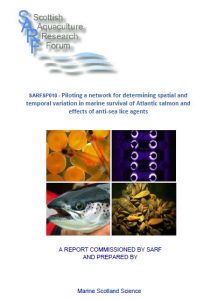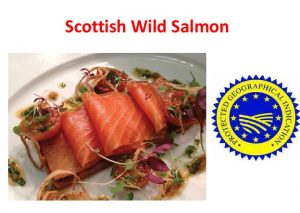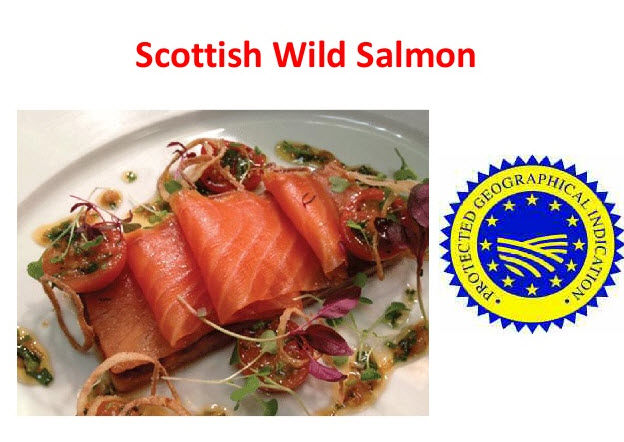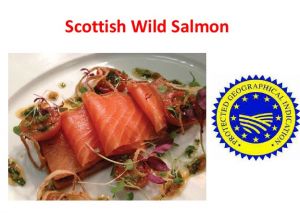Published: Marine Scotland regularly tweets whenever new publications are made available. This week, they remained strangely silent about one report. This is the long-awaited SARF report concerning their smolt treatment and returns study. The report is available at: http://www.sarf.org.uk/projects/projects—sarfsp010.php
This study is a Scottish version of Norwegian and Irish research in which a number of smolts are divided into two groups, one of which was treated with an anti-parasitic and then released. The number of fish returning from each group were counted and the two groups compared to see if there was any difference between the two groups and hence whether sea lice have any detrimental impact on wild fish numbers. The Norwegian and Irish studies found that the mortality of migrating smolts due to sea lice was about 1%.
We, at Callander McDowell, are not surprised that there has been no publicity about the publication of this interim report because after three years and at a cost of £600,000 we have learnt exactly nothing. The study has not contributed anything towards our understanding of the impacts of sea lice on wild salmon stocks.
The study on the west coast took place in the Loy and Lundy burns of the River Lochy. In 2015, 2,002 smolts were trapped for the study and a further 1,229 were trapped the following year. This makes a total of 3,231 fish that were included in the study. In total, two returning grilse were caught from the Loy burn; one from the control group and the other had been treated. This represents a recapture rate of nearly 0.06%. There have been no other recaptures.
The study was also repeated on the River Conon on the east coast with a total of 4,012 smolts. In total 52 grilse were recaptured from the two years of smolt releases. Thirty-two of the fish were from the control group and twenty were from the treated fish!
Finally, it might be suggested that at least the much higher return on the east coast does demonstrate that the west coast is in a worse position for salmon populations than the east. We wouldn’t agree. This is because the fish caught from the Conon were captured in a permanent trap built on the river. By comparison, the traps used on the west coast were temporary and were built by the researchers. When the river was in spate, fish could swim over the top of these traps, so it is unknown how many fish actually returned but were not recaptured.
The study does raise a number of other issues, but we will discuss these another time. Meanwhile, we would be interested to hear what other people think.

Annual Review: We, at Callander McDowell admit to being at times under-resourced. As a result, we have rather belatedly picked up our copy of the Fisheries Management Scotland Annual Review for 2017. This includes a brief review of all the main fishing rivers in Scotland.
Given the continued debate over the impacts of sea lice from salmon farms on wild fish, we were interested in the review of the River Carron (West Coast). This river empties into one of the largest aquaculture hubs in Scotland. The entry for the river states with regard to sea trout:
‘Sea trout and particularly finnock were evident in good numbers and were almost completely devoid of sea lice. Approximately 90% of the fish caught had no lice and no evidence of fin damage’.
The review states that 92 sea trout were caught with the largest weighing 4lbs.
There are some prolific sea trout rivers on the east coast. The fishing website ‘FishPal’ states of the River Deveron: ‘Sea trout normally enter the river in May and the runs peak in late June and July. Sea trout returns are in the region of 1,500 per season.’
The FMS Annual Review for the Deveron simply states: ‘The sea trout catch decreased by 15 percent, of which 96 percent were returned.’
The review states that 397 sea trout were caught and that the ten-year average was 596 fish. The largest sea trout caught was 9lb.
Whilst a 15% decrease of sea trout catches is of concern, the salmon and grilse catch from the river was down 16% too. This might suggest a localised problem, perhaps with low water. We don’t know. However, we mention the Deveron because the review also includes a graph of historic salmon and sea trout catches. This shows a long-term decline in sea trout catches stretching back to the 1960’s.
We would like to ask the question why west coast sea trout catches are under such scrutiny when iconic rivers on the east coast are clearly experiencing similar problems. The Deveron is not the only east coast river to show such declines of sea trout catches. Of course, these declines cannot be blamed on salmon farming. This is why they don’t receive any publicity.
PGI mix up: Dr James Merryweather of the Scottish Salmon Think Tank writes in a blog that ‘Champagne, Parmigiano-Reggiano, Melton Mowbray Pork Pies, Camembert, Hereford Cider, Waterford Blaa and others all have their hard-won and jealously guarded Protected Geographical Indication status (PGI) Why not Scottish Salmon?’
The point that Dr Merryweather wanted to make was that the PGI for Scottish Salmon was hi-jacked from under Scottish noses by Norwegian corporations and that he doubts that Scotland will ever be able to reclaim it.
Unfortunately, like much of his criticism of the salmon farming industry, Dr Merryweather has got his facts wrong. Firstly, Champagne, Parmesan and Camembert are Protect Designation of Origin (PDO) and not PGI products. PDO means that all the production and processing must be carried out within that specific origin. The UK supermarket ASDA fell foul of a PDO designation when it bought in whole Parmesan cheeses and had them sliced in the UK. This was not allowed under the terms of the PDO as if the cheese was to be packed as slices, then this had to be done in the Parma region. By comparison, PGI means that that only parts of the production or processing must take place in the specified region.
Like many others, Dr Merryweather appears to believe that the PGI is a brand or marketing tool. It is neither, it is simply a way that geographically produced foods can be protected. In the case of Farmed Scottish Salmon, there was some concern for a short time that Norwegian salmon was being sold in some markets as Scottish. As far as we, at Callander McDowell are aware, no action has been taken against any other geographic producer, so such substitution has not taken place. If it had, the PGI would have made it easier for Scottish producers to pursue the matter.
Dr Merryweather appears to suggest that the PGI designation was sought because it gave some Scottish credibility to salmon farmed by Norwegian owned producers. As we have suggested, it is likely to be the other way around with protection for Scottish farmed salmon from salmon produced elsewhere. He wonders whether the Scottish authorities have ever realised the significance of the singular designation being appropriated by invading Vikings. He asks whether Scotland could at least try to recover the brand name of one of our iconic national products?
Sadly, Dr Merryweather has let his many prejudices cloud his understanding of this issue. PGI’s and other designations are not brand names. They are intended to protect the name and quality of products. Scottish salmon is not really a brand name either.
What Dr Merryweather appears to suggest is that the name Scottish salmon has become totally associated with farmed salmon and that this could potentially confuse consumers who might think that they are buying wild salmon and not farmed. It is likely that Dr Merryweather who is confused, not consumers. We have been monitoring the retail sector for over twenty years and we have yet to see any wild Scottish salmon for sale other than in a handful of top fishmongers or stores. Most consumers have only ever had access to farmed salmon and salmon farmed in Scotland is Scottish salmon and it is labelled as farmed accordingly.
However, what Dr Merryweather has failed to comprehend is that Scottish farmed salmon is not the only PGI ascribed to Scottish salmon. There is also a PGI for Scottish Wild Salmon. This is for wild salmon that has been caught up to 1,500 metres from the Scottish coast. We are not sure how it could be even conceived that Norwegian corporations have hijacked this name.

Currently, there is little opportunity to buy PGI designated Scottish Wild Salmon because the Scottish Government have placed a ban on the catching of wild salmon by commercial netting because of concerns about the state of wild salmon stocks. A couple of London fishmongers do get occasional supplies of a handful of fish, but these are of fish commercially caught from rivers rather than the sea.
Dr Merryweather shows how little he knows about the salmon market as he relates how he spoke to some residents of Brevard North Carolina in the Unites States. Brevard is a very small town, but it does have a supermarket selling salmon. He reminded these residents of the conventional image of a salmon angler clad in tweed and wearing waders fishing for salmon in a Scottish river and they agreed that this was the image that a Scottish label conveyed. Such an image is as far from reality as the farmed image that Dr Merryweather so hates. Yet, the image of an angler fishing for salmon with rod and line is not how wild salmon are caught. In fact, anglers cannot sell the fish they catch commercially.
He goes on to say that the presence of the romantic image of Scottish salmon could sway the buying preference of US consumers away from fish such as ‘scarlet wild Alaskan sock-eye and also another less vivid but delicious wild Pacific species’. This fish must have been so well labelled that Dr Merryweather cannot even name which species it was. What Dr Merryweather fails to appreciate is that the decision most US consumers make is not between wild and farmed but between Pacific and Atlantic species. The fact that so much Atlantic salmon is imported into the US tells its own story as does the knowledge that US Charitable Foundations spent over $33 million trying to sway consumers to buying Pacific salmon because of recognition of this consumer preference.
Of course, if Dr Merryweather doesn’t want to eat PGI Scottish salmon, there is a third PGI for salmon in the UK. This is ‘West Wales Coracle caught salmon’.
Miaow: We, at Callander McDowell, have written more than once about the contradiction of fish-based pet foods. We have wondered why aquaculture receives so much criticism for the inclusion of fishmeal and fish oil in feeds yet, the use of fish in pet foods is celebrated with pet owners actually having a choice of the fish species they can feed their pet cats.
Now IntraFish reports that the Norwegian Marine Protein Network recently participated in a seminar with the Nordic Pet Food Event with the intention of bringing together pet food companies with suppliers of marine ingredients. It is estimated that Norway produces nearly a million tonnes of by-products every year.
It is estimated that there are now 82 million dogs and 103 million cats in Europe and the population is growing. These animals require 8.5 million tonnes of food every year worth nearly €200 million. The value is rising as pet-owners are willing to spend more to keep their best friends happy. In the US, pet food prices have risen 46% over the last seven years so that the average price now is $2.55/lb. Pet owners often spend more on their pets than they do on themselves.
We believe that this is the main reason why the environmental sector has failed to question why fish is being used in pet food, even though fish is not usually part of the natural diet of these animals, whereas they are highly critical of an aquaculture industry that feeds fish to animals whose natural diet is fish. It’s just typical that the salmon farming is criticised whilst the pet industry is left alone. The reality is that the environmental sector know that they will never persuade pet owners to change their choices, whereas the aquaculture industry is an easy target.
Of course, what has happened is that salmon diets are now rich in vegetable protein and the critics now question whether carnivorous fish should be fed vegetarian diets on welfare grounds!
Blything about: The Sustainable Food Trust has published an article on their website by food writer Joanna Blythman. The article is titled ‘Five things I never eat’. Regular readers will be able to see what is coming.
Ms Blythman lists the five foods she will never eat as 1. Factory-farmed chicken, 2. Refine vegetable oil, 3. Bananas that are not ‘Fairtrade’, 4. Supermarket in-store bakery bread and 5. Farmed salmon. Anyone interested in why she has chosen these foods can read her explanation at: https://sustainablefoodtrust.org/articles/five-things-i-never-eat/ . We’ll just focus here on her reasons for not eating farmed salmon.
She says that salmon farming is the marine equivalent of intensive land-based farming with vast concentrations of closely packed fish confined to underwater cages. The fish are fed on pelleted food made from ground up wild fish with added vitamins, minerals and binders such as wheat flour and soya, none of which figure in the diet of wild fish – see what we mean about vegetable protein diets!
She goes on to say that in Scotland and Ireland, fish farming is a significant contributing factor in the worrying reduction in the numbers of wild salmon and sea trout. ‘Escapee fish infect wild fish and interbreed with them so reducing their ability to cope in the wild. She adds that salmon farms are a magnet for disease and are treated with chemicals that are another cause for concern. She ends by saying that farmed salmon is a tragic travesty of wild fish and she won’t eat it.
Sadly, Joanna Blythman has a long-held view about salmon farming which she is unlikely to change.
However, the Sustainable Food Trust, who published her views, have recently been congratulated for being willing to post a response to an article they had published attacking the salmon farming industry. The article was by Lynn Schweisfurth from the Sustainable Aquaculture Network (https://sustainablefoodtrust.org/articles/the-tragic-demise-of-scotlands-salmon/) and the response was written by our Martin. Interestingly whilst, industry critics had repeatedly tweeted and retweeted links to Lynn’s article, they seem less willing to publicise the response: https://sustainablefoodtrust.org/articles/farmed-salmon-a-view-from-the-farm/


